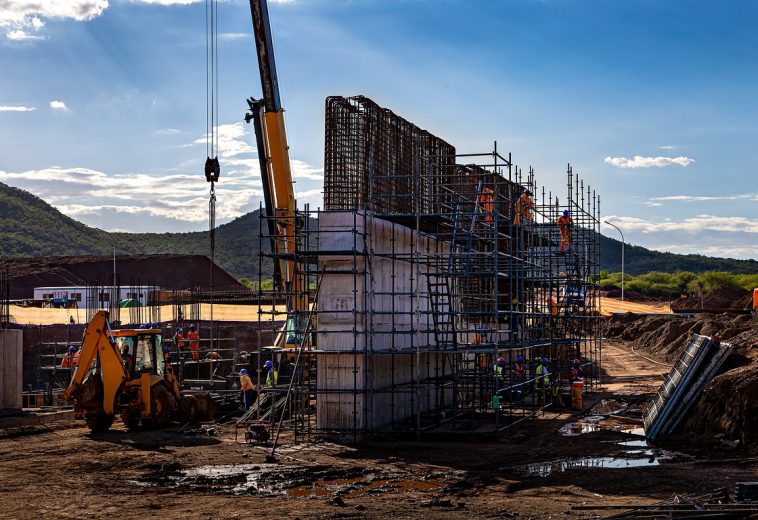Agriculture 4.0, the fourth agricultural revolution, marks the dawn of a technologically infused approach to farming. Utilising advanced tools such as artificial intelligence (AI), Internet of Things (IoT) devices, drones, and big data analytics, it promises a transformative shift towards precision agriculture. Although in sub-Saharan Africa, where agriculture accounts for nearly a quarter of the GDP and employs over 60% of the population, this transformation is both a necessity and a challenge. There is however, a pressing question; is the region ready to embrace this crucial shift?.
A Land of Paradoxes
The heart of Agriculture 4.0 lies in precision farming, a practice that uses data and technology to ensure every seed, drop of water, and unit of fertiliser is maximally efficient. This approach not only boosts productivity but also reduces waste and environmental degradation.
READ ALSO:http://Cross-Border Collaboration in Agriculture Across Africa
For instance,soil sensors enable farmers to monitor nutrient levels, drones facilitate large-scale pest control and planting, and remote sensing alongside geographic information systems (GIS) predicts yields with exceptional accuracy. This empowers farmers to adapt their strategies for improved outcomes..
While these innovations thrive in controlled environments, scaling them across rural Africa presents challenges, including high costs, poor infrastructure, and limited training for farmers.
Growing Success Amid Challenges
Nigeria: Sensor Technologies Reap Early Harvests
In Nigeria, soil sensors have been trialled on crops such as maize, cassava, and yams to optimise input use and improve yields. While the results are promising, adoption remains low due to a lack of technical expertise among smallholder farmers. Experts recommend developing simpler tools and implementing widespread training programmes to address this gap.
Kenya: Watching the Land from Space
Kenya has utilised remote sensing to manage invasive species like Prosopis juliflora. Satellite data has helped identify affected areas and protect biodiversity, especially in arid regions. Yet, the high cost of high-resolution satellite imagery and the technical skills needed to interpret the data limit broader adoption.
South Africa: Blending Conservation and Technology
South African farmers are leading the way by integrating conservation agriculture with digital tools. Using precision technology, they apply fertilizers and water only where needed, reducing both costs and environmental impact. While these advances are lauded, they are often restricted to commercial farmers, leaving smallholders in the margins.
Ethiopia: From Fields to Maps
Ethiopia has harnessed GIS technology to boost land productivity. By mapping farmlands, Ethiopian farmers can predict yields and allocate resources more effectively. However, these benefits are primarily confined to urban areas, with rural farmers struggling to access such advancements due to infrastructural and financial barriers.
Climate, Food, and the Digital Plough
The climate crisis looms large over Africa’s agricultural landscape, with unpredictable weather patterns and land degradation threatening yields. Agriculture 4.0 offers a beacon of hope.
Precision farming minimizes the overuse of resources like water and fertilizers, reducing greenhouse gas emissions. For instance, drip irrigation guided by sensor data has been shown to save up to 40% of water while maintaining high yields. Additionally, real-time weather monitoring systems help farmers prepare for adverse conditions, safeguarding harvests.
Globally, adopting such methods could position Africa as a key exporter of climate-resilient crops, boosting global food security while addressing regional hunger.
Counting the Cost
Investing in Agriculture 4.0 isn’t cheap. Sub-Saharan Africa needs an estimated $15 billion annually to modernize its agricultural sector. While governments, private stakeholders, and international organizations like the Alliance for a Green Revolution in Africa (AGRA) have injected funds, the gap remains wide.
Nigeria, for instance, has dedicated millions to digital farming initiatives, while South Africa’s commercial sector has spent heavily on precision tools. Yet, the high costs of importing these technologies and the lack of local production capabilities make them unaffordable for most small-scale farmers.
Reaping a Digital Harvest
For Agriculture 4.0 to take root across Sub-Saharan Africa, governments and stakeholders must tackle key challenges:
• Infrastructure Development: Investments in broadband, electricity, and transport are foundational for technology adoption.
• Capacity Building: Training programs can equip farmers with the skills needed to use advanced tools effectively.
• Inclusive Policies: Subsidizing technologies for smallholder farmers ensures equitable access to innovations.
While the hurdles are significant, the rewards are immense. Agriculture 4.0 isn’t just a technological shift; it’s a chance to redefine Africa’s role in feeding itself and the world. By investing in this green digital revolution, the continent can sow the seeds for a more prosperous, sustainable future.
The fields of Sub-Saharan Africa are ready for transformation. The question is, will the region embrace the tools needed to make this vision a reality?


